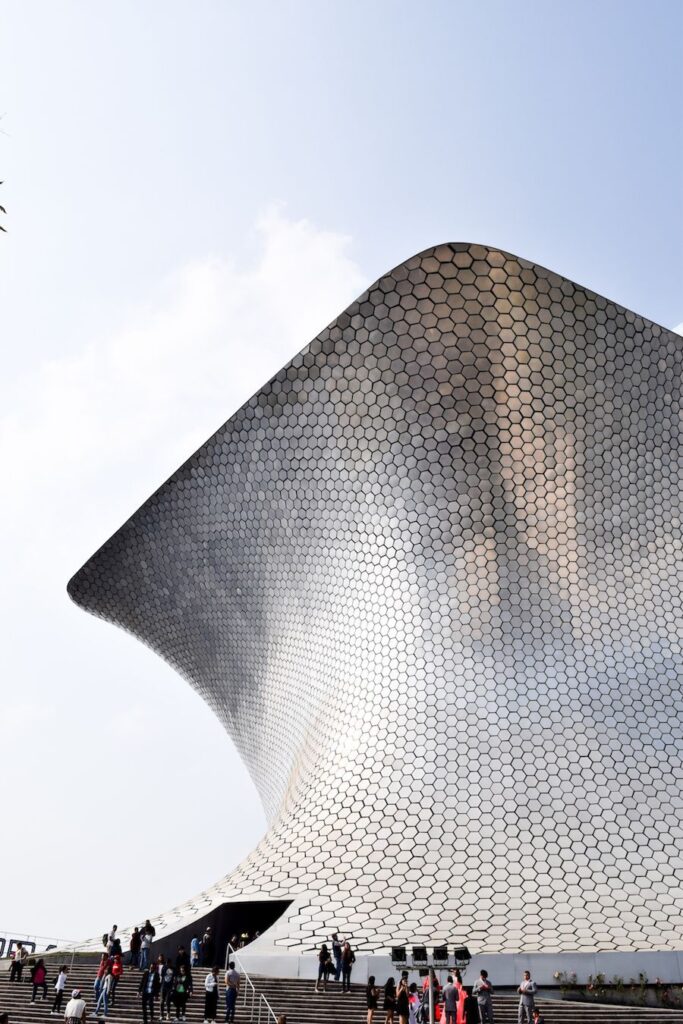If you have a passion for art and a longing to immerse yourself in the rich cultural tapestry of Mexico, then exploring Mexico’s magnificent art museums is an absolute must. From the bustling streets of Mexico City to the colorful landscapes of Oaxaca, the country is home to a treasure trove of art that is just waiting to be discovered. With world-renowned institutions showcasing everything from ancient Aztec artifacts to contemporary masterpieces, this journey into creative expression will leave you captivated and inspired. So grab your sketchbook or simply bring along an open mind, because the vibrant art scene of Mexico is calling your name.
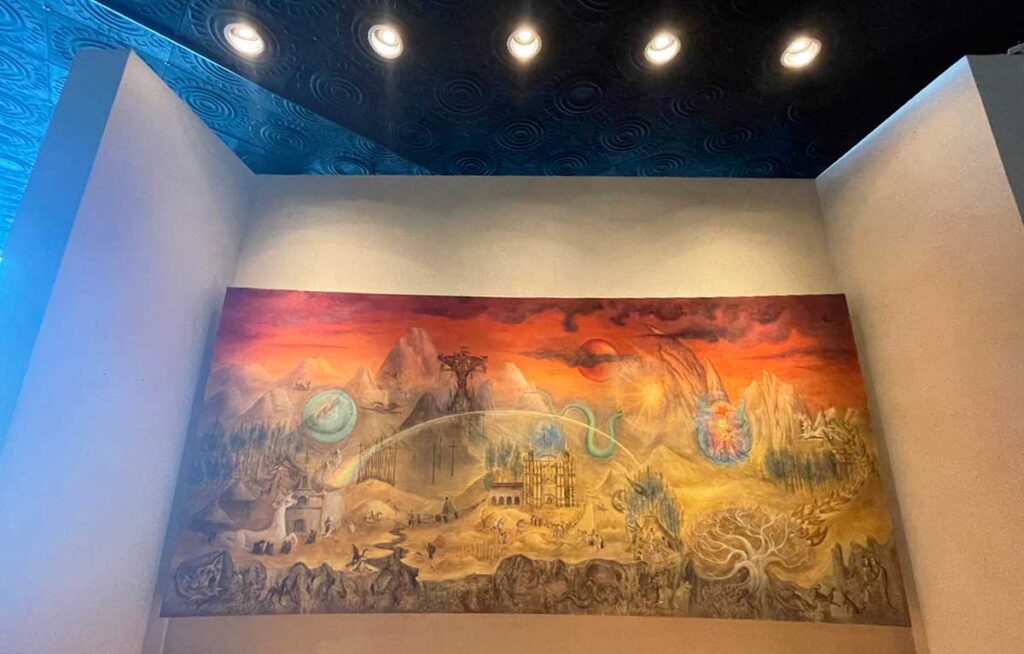
The National Museum of Anthropology
Overview of the museum
The National Museum of Anthropology in Mexico City is a must-visit destination for anyone interested in exploring the rich and diverse cultural heritage of Mexico. This vast museum is home to an impressive collection of archaeological artifacts, ethnographic exhibits, and works of art that span thousands of years of Mexican history. The museum was officially opened in 1964 and is renowned for its comprehensive approach to exploring the country’s past.
Highlights of the museum
Within the National Museum of Anthropology, visitors can discover a myriad of fascinating highlights. One of the most iconic exhibits is the Aztec Sun Stone, also known as the Stone of the Sun or the Calendar Stone. This colossal stone disc, carved with intricate symbols and images, was originally located in the Templo Mayor and is an important symbol of Aztec civilization.
Another standout feature is the Aztec Hall, which showcases the majestic Aztec Empire through a rich display of sculptures, ceramics, and jewelry. The hall offers valuable insights into the daily lives, religious practices, and political power of this ancient civilization.
Famous exhibits
The National Museum of Anthropology boasts several renowned exhibits that attract visitors from all over the world. One of these is the famous “La Noche Triste” (The Sad Night) room, which portrays the dramatic events surrounding the fall of the Aztec capital of Tenochtitlán to the Spanish conquistadors. Here, you can marvel at the spectacular relief sculptures depicting these historic events.
Another prominent exhibit is the Olmec Hall, which showcases the Olmec civilization, considered one of the oldest and most influential cultures in Mesoamerica. Visitors can admire the colossal Olmec heads, meticulously carved stone sculptures that symbolize the power and importance of these ancient people.
Architectural features
In addition to its extraordinary exhibits, the National Museum of Anthropology is a marvel of architectural design. The museum’s building was designed by renowned Mexican architect Pedro Ramírez Vázquez, who incorporated elements of modernist and indigenous architecture into its design. The most iconic architectural feature is the central courtyard, which is adorned with a stunning cascading waterfall that pays homage to the country’s natural beauty. The design of the building seamlessly blends with the surrounding Chapultepec Park and creates a harmonious and captivating atmosphere for museum visitors.
The Palacio de Bellas Artes
Background of the palace
The Palacio de Bellas Artes, or Palace of Fine Arts, is an elegant and grand building located in the heart of Mexico City. Construction of this cultural marvel began in 1904 and was completed in 1934. The palace serves as a hub for various artistic expressions, including music, dance, theater, and visual arts.
Collections and exhibitions
While the Palacio de Bellas Artes doesn’t have a permanent collection, it regularly hosts temporary art exhibitions that showcase the works of prominent Mexican and international artists. These exhibitions cover a wide range of artistic styles and mediums, providing visitors with a diverse and enriching experience.
Diego Rivera murals
One of the main attractions within the Palacio de Bellas Artes is the stunning series of murals by famous Mexican artist Diego Rivera. These murals, titled “Man at the Crossroads” and “Man, Controller of the Universe,” depict Rivera’s vision of the social and political struggles of his time. The murals have become an iconic representation of Mexican muralism and are a true testament to Rivera’s talent and his commitment to capturing the essence of Mexican culture.
Architecture and design
The Palacio de Bellas Artes is a true masterpiece of architectural design. The building features a combination of architectural styles, including Neoclassical, Art Nouveau, and Art Deco. Its magnificent dome, adorned with colorful mosaic tiles, is an architectural marvel that can be admired from both the interior and exterior of the palace. The combination of exquisite design and the building’s strategic location make the Palacio de Bellas Artes one of Mexico City’s most beloved and admired landmarks.
Museo Frida Kahlo
Life and works of Frida Kahlo
The Museo Frida Kahlo, also known as the Frida Kahlo Museum or the Blue House, is dedicated to showcasing the life and works of one of Mexico’s most iconic artists, Frida Kahlo. Kahlo is celebrated for her unique and introspective style, as well as her ability to convey emotional and physical pain through her art. The museum offers visitors a deep dive into Kahlo’s personal life, her struggles, and her enduring impact on the art world.
The Blue House
The Blue House, located in Coyoacan, was the childhood home of Frida Kahlo and later became her residence with her husband, renowned Mexican muralist Diego Rivera. The vibrant blue exterior and the colorful interior of the house reflect Kahlo’s distinctive artistic style and her deep connection to Mexican culture. Visitors to the museum can explore the various rooms of the house, including the studio where Kahlo created many of her masterpieces.
Exhibits at the museum
The Museo Frida Kahlo houses a significant collection of Kahlo’s artwork, personal belongings, and memorabilia. From her iconic self-portraits to her personal diary and clothing, the exhibits provide an intimate look into Kahlo’s inner world and the influences that shaped her art. Visitors can also view works by other artists, such as Diego Rivera and Jose Clemente Orozco, who were part of Kahlo’s artistic circle.
Importance of the museum
The Museo Frida Kahlo serves as a testament to Frida Kahlo’s enduring legacy and her contribution to the art world. It allows visitors to gain a deeper understanding of Kahlo’s life, her struggles with physical and emotional pain, and her relentless pursuit of creative expression. Through her art, Kahlo explored themes of identity, gender, and Mexican culture, making her a symbol of strength and resilience for generations to come.
Museo Nacional de Arte
History and architecture
The Museo Nacional de Arte, located in the historical center of Mexico City, is housed in a magnificent neoclassical building known as the Palacio de Caxa. The museum was opened in 1982 with the aim of promoting and preserving Mexican art from the 16th to the mid-20th century.
Permanent collections
The museum’s permanent collection is a treasure trove of Mexican art masterpieces. It showcases works by renowned artists such as Miguel Cabrera, Frida Kahlo, Diego Rivera, and David Alfaro Siqueiros. Visitors can admire a diverse range of art forms, including paintings, sculptures, textiles, and decorative arts. The collection provides a comprehensive overview of Mexican art history and highlights the evolution of artistic styles and themes over the centuries.
Temporary exhibitions
In addition to its permanent collection, the Museo Nacional de Arte hosts temporary exhibitions that focus on specific artists, art movements, or periods in Mexican art history. These exhibitions offer visitors the opportunity to explore lesser-known artists, discover new perspectives, and delve deeper into specific artistic periods.
Prominent Mexican artists
The Museo Nacional de Arte plays a crucial role in showcasing the works of prominent Mexican artists whose contributions to the art world are internationally recognized. Artists such as Diego Rivera, Frida Kahlo, and Rufino Tamayo have been instrumental in shaping Mexican art and continue to inspire artists and art enthusiasts worldwide. By highlighting their works, the museum celebrates their artistic achievements and preserves their legacies for future generations.
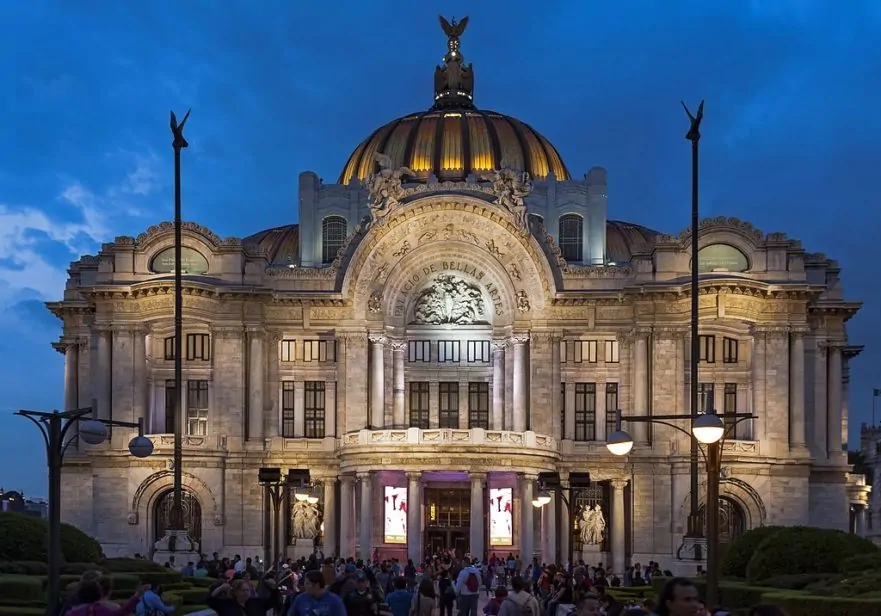
Rufino Tamayo Museum
Overview of Rufino Tamayo
The Rufino Tamayo Museum is dedicated to the life and works of one of Mexico’s most renowned modern artists, Rufino Tamayo. Tamayo is recognized for his unique style that blends elements of Mexican folk art with modernist influences. His bold use of colors, shapes, and textures creates vibrant and evocative paintings that reflect his perspective on Mexican culture and the human experience.
Cultural context of his artwork
Tamayo’s art is deeply rooted in Mexican culture, and he often drew inspiration from Indigenous art, pre-Hispanic mythology, and folk traditions. His works aim to capture the essence of Mexican identity while also exploring universal themes of human emotions and spirituality. Tamayo’s art reflects his belief in the importance of cultural diversity and the power of art to bridge cultural barriers.
Collections at the museum
The Rufino Tamayo Museum houses an extensive collection of Tamayo’s paintings, sculptures, and graphics. Visitors can immerse themselves in the vibrant colors and dynamic compositions that define Tamayo’s artistic style. The museum also showcases temporary exhibitions that explore Tamayo’s artistic legacy, as well as the works of other contemporary artists who share his vision and artistic sensibilities.
Significance of the museum
The Rufino Tamayo Museum serves as a testament to Rufino Tamayo’s contributions to the art world and his dedication to promoting Mexican culture through art. By preserving his works and providing a space for their exhibition, the museum ensures that Tamayo’s artistic legacy continues to inspire and educate future generations. Furthermore, the museum actively engages with contemporary art and hosts exhibitions that push boundaries and challenge traditional notions of artistic expression.
Dolores Olmedo Museum
Profile of Dolores Olmedo
The Dolores Olmedo Museum is named after Dolores Olmedo, a philanthropist and prominent patron of the arts in Mexico. Olmedo’s love for art and her belief in the importance of preserving Mexico’s cultural heritage led her to amass an impressive collection of artworks, many of which are now on display at the museum. Her contributions to promoting Mexican art and artists have left an indelible mark on the country’s cultural landscape.
The Hacienda La Noria
The Dolores Olmedo Museum is located in the Hacienda La Noria, a historic estate on the outskirts of Mexico City. The estate is a beautiful representation of Mexican colonial architecture, with sprawling gardens, colorful buildings, and tranquil courtyards. The museum’s setting provides visitors with a serene and picturesque environment in which to explore the art and culture of Mexico.
Art collections at the museum
The Dolores Olmedo Museum houses an impressive collection of Mexican art, featuring works from various periods and artistic movements. From pre-Hispanic art to modern and contemporary pieces, the museum offers a comprehensive look at Mexico’s artistic heritage. The collection includes masterpieces by renowned artists such as Diego Rivera, Frida Kahlo, and Rufino Tamayo, as well as lesser-known artists who have made significant contributions to Mexican art.
Promotion of Mexican art
The Dolores Olmedo Museum actively promotes Mexican art and artists through exhibitions, educational programs, and cultural events. The museum’s commitment to showcasing the diversity and richness of Mexican art has played a crucial role in elevating the country’s artistic reputation on a global scale. By fostering appreciation for Mexican art, the museum ensures that the legacies of both established and emerging artists are celebrated and preserved.
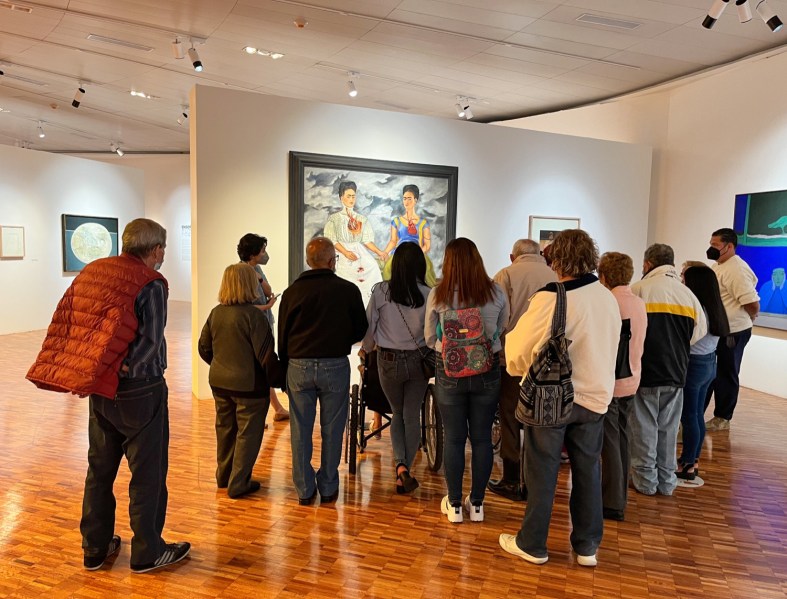
National Museum of Modern Art
Establishment and purpose
The National Museum of Modern Art, or Museo de Arte Moderno, was established in 1964 with the aim of promoting and exhibiting modern and contemporary art from Mexico and beyond. The museum serves as a platform for artists to showcase their innovative and cutting-edge works, while also providing the public with an opportunity to engage with and appreciate modern art.
Collections and exhibits
The museum’s collections span a wide range of artistic mediums, including painting, sculpture, photography, video art, and installations. The permanent collection features works by renowned Mexican modern artists such as David Alfaro Siqueiros, Rufino Tamayo, and Francisco Zuniga. The museum also hosts temporary exhibitions that explore various art movements, themes, and international contemporary artists.
Modern art movements
The National Museum of Modern Art offers valuable insights into the evolution of modern art in Mexico. The museum’s exhibits showcase the influence of various art movements, such as Mexican muralism, abstract expressionism, and conceptual art, on the development of Mexican modern art. Visitors can witness the diverse range of artistic styles and expressions that have shaped the Mexican art scene over the past century.
Influence on Mexican art scene
The National Museum of Modern Art has played a significant role in shaping the Mexican art scene by providing artists with a platform to showcase their works and encouraging experimentation and innovation. The museum’s exhibitions and programs contribute to the ongoing dialogue surrounding contemporary art in Mexico, fostering a vibrant and dynamic artistic community. Additionally, the museum’s educational initiatives aim to engage and inspire future generations, ensuring the continued growth and evolution of Mexican art.
Templo Mayor Museum
Archaeological significance
The Templo Mayor Museum, located in the heart of Mexico City, is dedicated to preserving and showcasing the ancient Aztec ruins of the Templo Mayor. These ruins were discovered in the 1970s and are of immense archaeological significance, providing invaluable insights into Aztec civilization and its religious practices.
Excavations and discoveries
Excavations at the Templo Mayor site have unearthed a wealth of artifacts, including sculptures, ceramics, and sacrificial remains. These discoveries have shed light on Aztec rituals, beliefs, and societal structures. The museum allows visitors to witness the ongoing excavation efforts and learn about the fascinating discoveries made at the site.
Artifacts and exhibits
The Templo Mayor Museum houses a vast collection of Aztec artifacts that were excavated from the Templo Mayor site. Visitors can admire intricately carved stone sculptures, delicate ceramics, and exquisite gold jewelry, all of which provide a glimpse into the artistic achievements of the Aztec civilization. The museum’s exhibits also explain the religious significance of these artifacts and their role in Aztec rituals and ceremonies.
Context of Aztec culture
The Templo Mayor Museum not only showcases the artifacts and architectural remains of the ancient Aztec civilization but also provides visitors with a deeper understanding of the social, cultural, and political context in which the Aztecs thrived. Through multimedia presentations and informative displays, visitors can learn about the Aztec pantheon of gods, their agricultural practices, their hierarchical society, and their complex relationship with other Mesoamerican civilizations.
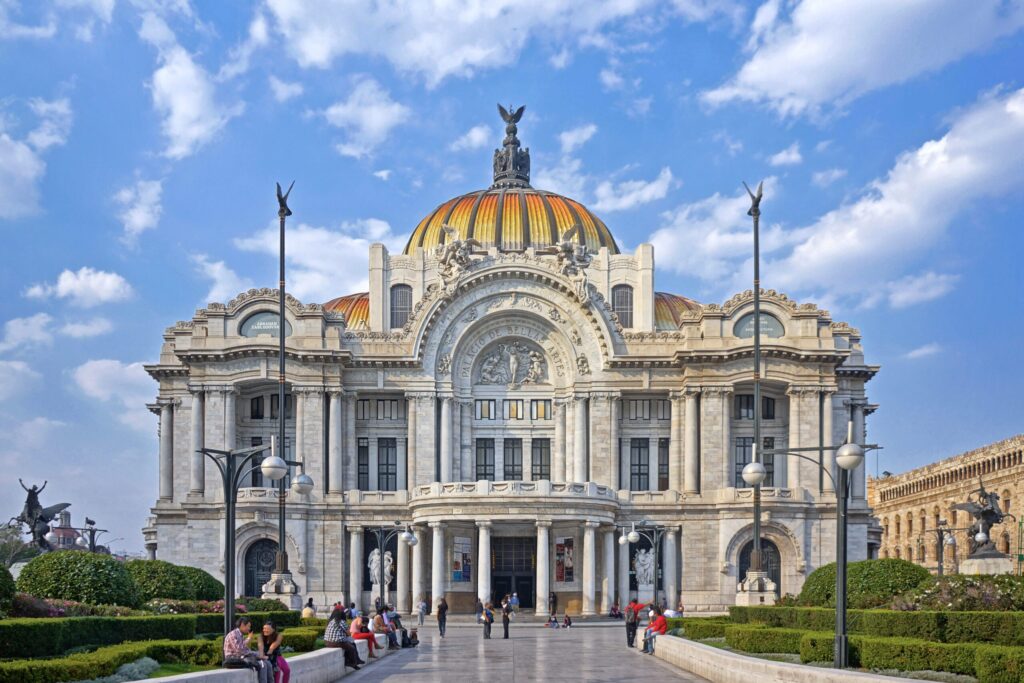
Soumaya Museum
Carlos Slim’s collection
The Soumaya Museum, located in Mexico City, houses the extensive art collection of Mexican business magnate Carlos Slim. Slim’s collection is one of the most comprehensive and diverse private collections of art in the world, encompassing a wide range of artistic periods and styles.
Architectural design
The Soumaya Museum itself is a work of art. Designed by renowned architect Fernando Romero, the museum’s unique architecture features a striking avant-garde design. The building is characterized by its curvaceous shape and a facade covered in a reflective skin, resembling a giant silver sculpture. The museum’s design beautifully complements the artworks exhibited within, creating a harmonious and visually captivating experience for visitors.
Artworks and collections
The Soumaya Museum showcases a vast array of artworks, including paintings, sculptures, decorative arts, and ancient artifacts. The collection spans over 30 centuries of art history and features works by renowned artists such as Vincent van Gogh, Pablo Picasso, and Auguste Rodin. Visitors can explore the various galleries and immerse themselves in a diverse range of artistic expressions, from classic European masterpieces to contemporary Mexican art.
Community engagement
In addition to its impressive art collection, the Soumaya Museum actively engages with the local community through educational programs, cultural events, and community outreach initiatives. The museum’s commitment to accessibility and its dedication to promoting art and culture to a wide audience have made it a vibrant hub for artistic expression and creative exchange in Mexico City.
Leon Trotsky Museum
Life of Leon Trotsky
The Leon Trotsky Museum is dedicated to the life and legacy of Leon Trotsky, a key figure in the Russian Revolution and a prominent Marxist theorist. After being exiled from the Soviet Union, Trotsky sought refuge in Mexico, where he lived until his assassination in 1940. The museum offers a glimpse into Trotsky’s life, his political struggles, and his impact on the global socialist movement.
Exile in Mexico
Leon Trotsky’s exile in Mexico played a significant role in shaping the country’s political landscape. During his time in Mexico, Trotsky continued his efforts to rally support for international socialist revolution and clashed with the Soviet regime led by Joseph Stalin. The museum provides visitors with an opportunity to explore this tumultuous period in Mexican history and learn about the geopolitical dynamics of the time.
Museum exhibits
The Leon Trotsky Museum showcases a range of exhibits that illustrate the various aspects of Trotsky’s life and ideology. Visitors can view personal items, photographs, and documents that shed light on his revolutionary activities and the challenges he faced during his exile. The museum also displays artifacts related to Trotsky’s assassination, offering a somber reminder of the tragic end to his life.
Historical significance
The Leon Trotsky Museum holds great historical significance, both in Mexico and globally. It serves as a reminder of the ideological struggles of the early 20th century and the global reach of the socialist movement. The museum also pays homage to Mexico’s role as a refuge for political exiles and its commitment to providing a safe haven for those fighting for political freedom and social justice.
Through its diverse array of art museums, Mexico offers a journey into creative expression that is unparalleled. From the impressive National Museum of Anthropology to the Palacio de Bellas Artes, each museum invites you to explore the intricate tapestry of Mexican history, art, and culture.
The National Museum of Anthropology provides a comprehensive overview of Mexico’s rich cultural heritage. The museum’s highlights, such as the Aztec Sun Stone and the Aztec Hall, transport you to the ancient civilizations that once thrived in this land. The museum’s architectural features, including the captivating central courtyard, create a captivating atmosphere that enhances your exploration of the exhibits.
The Palacio de Bellas Artes, with its striking architecture and Diego Rivera murals, is another cultural gem in Mexico City. As you delve into the collections and exhibitions, you’ll discover the power of art to convey social and political messages. The murals by Diego Rivera, in particular, provide a thought-provoking glimpse into Mexico’s history and societal struggles.
For a more intimate and personal experience, visit the Museo Frida Kahlo, also known as the Blue House. This museum allows you to immerse yourself in the life and works of the iconic Mexican artist Frida Kahlo. From her vibrant self-portraits to the artifacts and personal belongings displayed within the Blue House, you’ll gain a deeper understanding of Kahlo’s artistic vision and her enduring impact on the art world.
The Museo Nacional de Arte offers a comprehensive journey through Mexican art history. The museum’s permanent collections showcase the works of renowned Mexican artists and highlight the evolution of artistic styles and themes. In addition, temporary exhibitions provide an opportunity to explore lesser-known artists and engage with contemporary art movements.
The Rufino Tamayo Museum is dedicated to the life and works of Rufino Tamayo, whose art embodies a unique fusion of Mexican folk art and modernist influences. As you explore the museum, you’ll gain insights into Tamayo’s cultural context and his contributions to the Mexican art scene. The museum’s collections reflect Tamayo’s celebration of cultural diversity and commitment to pushing artistic boundaries.
The Dolores Olmedo Museum, situated in the picturesque setting of Hacienda La Noria, showcases the art collections of Dolores Olmedo, a prominent patron of Mexican art. The museum’s emphasis on promoting Mexican art and artists is evident through its wide-ranging collection and educational initiatives. By preserving and exhibiting Mexican art, the Dolores Olmedo Museum contributes to the ongoing promotion of Mexico’s rich artistic heritage.
The National Museum of Modern Art provides a platform for contemporary artists to showcase their works and engage with the public. The museum’s collections and exhibits highlight the diverse range of artistic expressions that have shaped the Mexican art scene. Additionally, the museum’s influence on the Mexican art scene extends beyond its physical space, fostering a dynamic and innovative artistic community.
The Templo Mayor Museum immerses you in the awe-inspiring world of the ancient Aztec civilization. As you explore the archaeological site and examine the artifacts and exhibits, you’ll gain a deeper understanding of Aztec culture, rituals, and beliefs. The museum’s important archaeological discoveries offer valuable insights into Mexico’s pre-Hispanic past, contributing to our understanding of Mesoamerican civilizations.
The Soumaya Museum, with its vast art collection, exemplifies the vision of Carlos Slim to promote and preserve art from diverse periods and styles. The museum’s architectural design, characterized by its avant-garde shape and reflective exterior, adds to the overall artistic experience. By engaging with the local community and hosting cultural events, the museum actively contributes to the artistic and cultural vibrancy of Mexico City.
Lastly, the Leon Trotsky Museum provides a historical perspective on the life and political struggles of Leon Trotsky. Through its exhibits and artifacts, the museum sheds light on Trotsky’s significance within the global socialist movement and his exile in Mexico. The museum serves as a reminder of Mexico’s commitment to providing a safe haven for political exiles and its role in shaping the global political landscape.
Mexico’s exquisite art museums offer a wealth of artistic treasures and cultural experiences. Whether you’re drawn to ancient civilizations, revolutionary murals, or contemporary art movements, these museums provide a journey into Mexico’s creative expression that is sure to leave a lasting impact.
